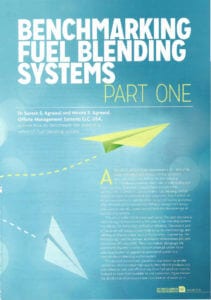 A typical refinery produces about 75-80% of its crude throughput and produces its fuel products (gasoline, diesel, LPG, fuel oil) by blending 10-12 refinery products, which varies in both quality and monetary value. These fuel products have very strict specifications to meet and refineries use automated fuels blending control systems to optimize and control their properties. Any shortfalls in the delivered products specs, delays, and quality giveaways affect the enterprise bottom-line severely. Refinery management always looks for ways to identify and correct and enhance the shortcomings of their fuels blending systems.
A typical refinery produces about 75-80% of its crude throughput and produces its fuel products (gasoline, diesel, LPG, fuel oil) by blending 10-12 refinery products, which varies in both quality and monetary value. These fuel products have very strict specifications to meet and refineries use automated fuels blending control systems to optimize and control their properties. Any shortfalls in the delivered products specs, delays, and quality giveaways affect the enterprise bottom-line severely. Refinery management always looks for ways to identify and correct and enhance the shortcomings of their fuels blending systems.
This paper discusses a methodology to benchmark the state of fuels blending systems in a refinery to compare with other refineries by using two indices, Automation Effectiveness (AE) and Operational Efficiency (OE). These two indices also gauge the budgetary investment required to either convert a manual system to an automated system or upgrade automated system to a state-of-the-art blending control system.
An abridged version of this paper is published in “Bench-marking Fuel Blending Systems, Part-One”, Hydrocarbon Engineering, March 2018, pp 101-108. This download is the original manuscript. Copyright of published paper by HE prevents us from downloading here.

